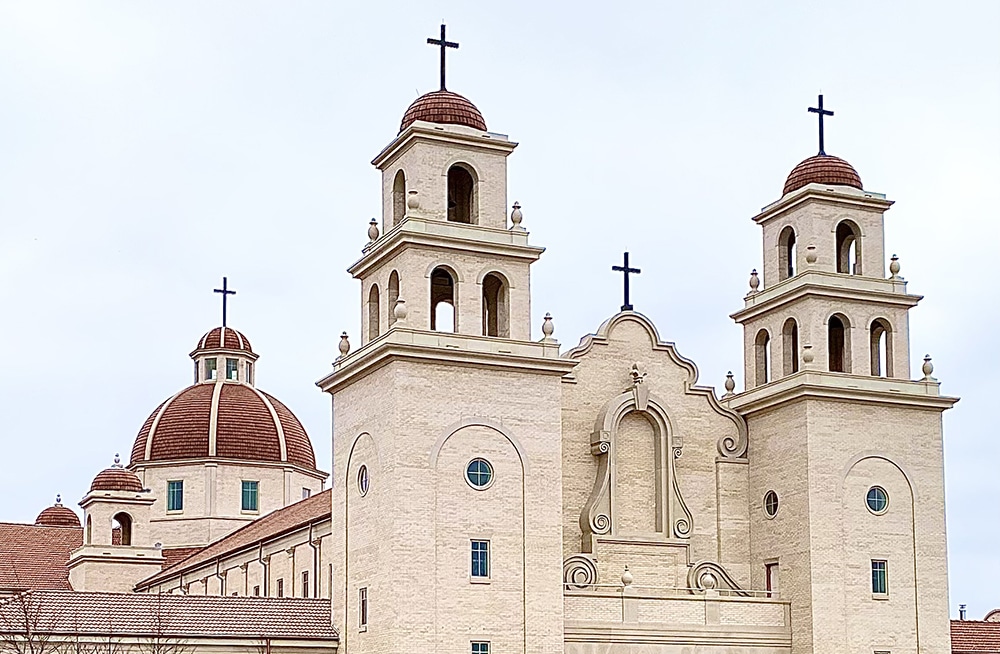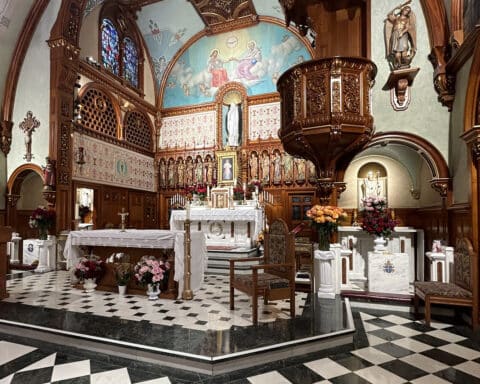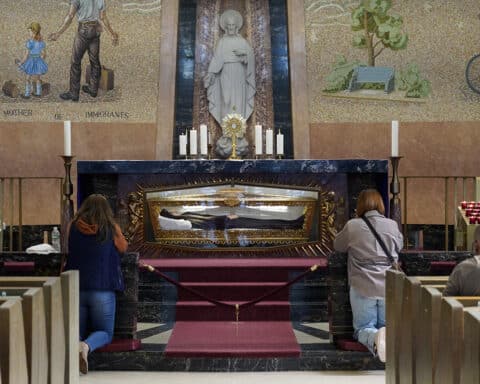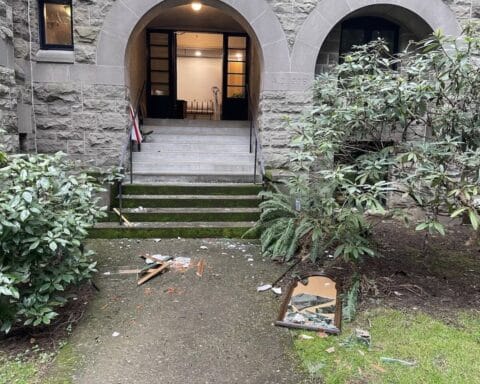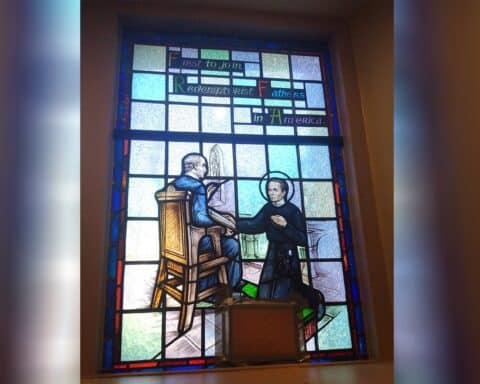“The shepherd cannot run at the first sign of danger.” These words were written by Father Stanley Rother, a missionary in Guatemala, explaining his reasoning for remaining with his flock in that country, in the face of threats on his life. On July 28, 1981, Father Rother was shot and killed in Guatemala, where he had served as a missionary since 1968. Over 40 years later, Father Rother has since been beatified, and a monumental shrine in his honor (but truly for the glory of God) is rising in central Oklahoma.
Who was Blessed Stanley Rother?
Stanley Francis Rother was born March 27, 1935, in Okarche, Oklahoma, a small town about 35 miles west of Oklahoma City. He grew up on a farm, played sports, and was an altar server at his local parish. He entered seminary after high school, initially struggling academically (particularly with Latin), but ultimately completed his studies and was ordained a priest on May 25, 1963.
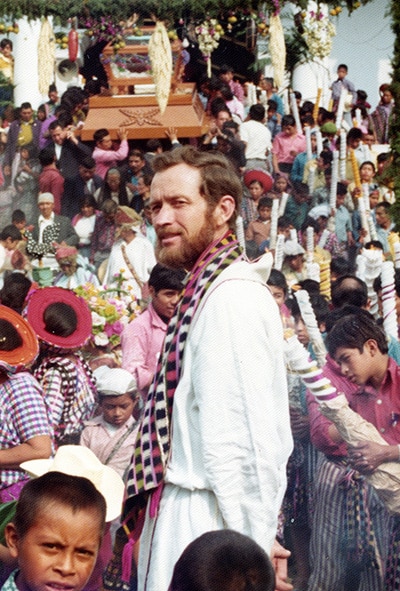
After five years of parish work in Oklahoma, Father Rother received permission to serve as a missionary in Guatemala. He quickly learned Spanish and the native Tz’utujil language, even translating the New Testament and celebrating Mass in that tongue. He brought his farming skills to bear in assisting the Tz’utujil people in growing better and more abundant crops. He helped them with medical needs, built an irrigation system and, most importantly, dispensed the sacraments.
All was not OK in Guatemala, however. A civil war had erupted, and the Catholic Church was caught squarely in the crosshairs. Thousands of Catholics were killed, including American missionaries and others. Before long, Father Stanley Rother’s name appeared on a death list, which indicated the government had every intention of ending his life. This was early in 1981, and he was convinced (reluctantly) to return to Oklahoma. However, his desire to celebrate Easter with his flock, and his resolve that they needed him more than ever, prompted him to obtain permission from his archbishop to return to Guatemala in April of that year.
At 1 a.m. on July 28, 1981, three armed men entered the rectory, fought with Father Rother and executed him. His remains were interred in Oklahoma City, but at the request of the people he served, his heart remained in Guatemala. His story spread quickly, and he was formally recognized as a martyr in 2016 and beatified on Sept. 23, 2017.
Blessed Stanley’s influence
While not the only Catholic to be killed in the Guatemalan civil war, and not even the only missionary, Blessed Stanley Rother’s story has had a particularly profound impact far and wide. To give just a few examples, at least four bishops currently leading dioceses in the United States have direct connections to and were influenced by Father Rother.
Bishop Daniel Mueggenborg of the Diocese of Reno, Nevada, is also originally from Okarche and served Mass for Father Rother shortly before his return to Guatemala and his subsequent murder. He was inspired to become a priest in large part by the example of Father Rother.
Bishop Anthony Taylor of the Diocese of Little Rock, Arkansas, was a priest of the Archdiocese of Oklahoma City, and one of his responsibilities was as episcopal delegate for the process of Father Rother’s cause for canonization. He has a great devotion to Rother and wrote a book (based on a presentation he would give) called “Blessed Stanley Francis Rother: The First American Martyr” (Arkansas Catholic, $6).
Bishop Edward Weisenburger of the Diocese of Tucson, Arizona, was also a priest of the Archdiocese of Oklahoma City and served as promoter of justice for Rother’s cause.
Archbishop Paul Coakley of the Archdiocese of Oklahoma City was in the seminary at Mount St. Mary’s in Emmitsburg, Maryland (Father Rother’s alma mater) when Rother was killed. Ever since Father Rother’s murder, Archbishop Coakley has held a strong devotion to him. Years later, after receiving word that he was to be the next archbishop of Oklahoma City, Archbishop Coakley (who was at the time the bishop of the Diocese of Salina, Kansas) made a sort of secret pilgrimage from Salina down to Okarche, Oklahoma, to pray for the intercession of Father Rother. “I’ve had a very real sense of closeness to Father Rother all these years,” Archbishop Coakley said.
The idea of a shrine
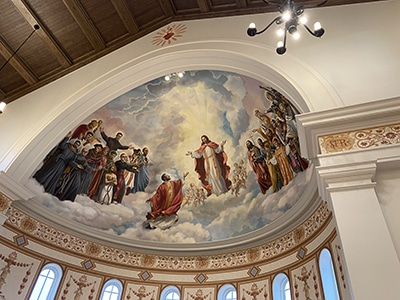
When word came from Rome that the Holy Father had declared Father Rother to be a martyr, his beatification was practically a foregone conclusion, and preparations in the archdiocese began. “When we learned that he was going to be beatified, my thoughts turned immediately to developing a suitable shrine for him, where he would be honored and people could make pilgrimage and seek his intercession and so forth,” Archbishop Coakley said.
“People would be coming from all over the state, and all over the region, and all over the country to venerate Blessed Stanley Rother,” Archbishop Coakley continued.
Archbishop Coakley pointed out that Father Rother is an everyman, very relatable. “I anticipate that his popularity will continue to grow as more and more people learn about his life. We’re hoping that the shrine will be a place of pilgrimage for all these people, that people will learn about his life at the museum, that people will pray for his intercession at the tomb. I hope it will be a great source of grace, not only for the Church in Oklahoma, but the Church in our region and the whole country.”
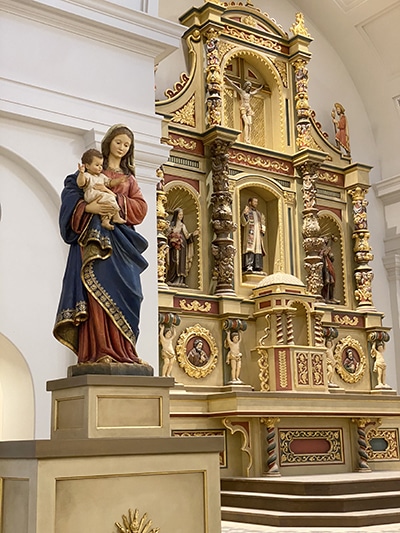
Archbishop Coakley is scheduled to preside over a dedication Mass at the shrine on Feb. 17.
Father Don Wolf is rector of the Blessed Stanley Rother Shrine and is also Father Rother’s second cousin. He said that the shrine “will be the place of pilgrimage for those who wish to have an encounter with the experience of God in their lives, especially as that encounter was experienced and brought forth in the life and ministry of Blessed Stanley.” He continued, “The shrine has the grace to invite all who come to encounter the extraordinary witness of Stan’s life and martyrdom and in coming to know him and his witness, to encounter the same invitation to the same extraordinary witness in their own lives.”
The legacy of Blessed Stanley and others
“Blessed Stanley Rother is truly a heroic figure to look up to, to imitate in virtue, and to follow on the path of discipleship, which his life marked out so beautifully and so clearly,” Archbishop Coakley said. “Truly a heroic life, but really a very ordinary one.”
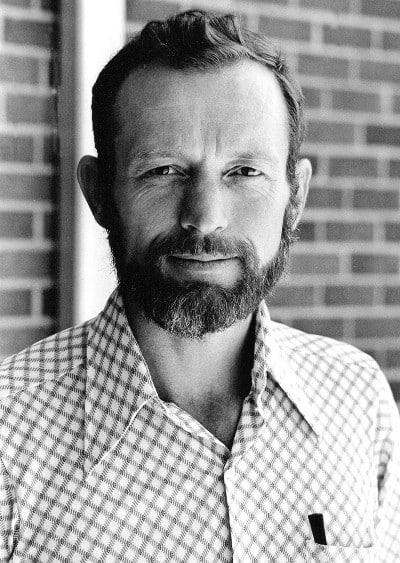
Just a few hours north of the Blessed Stanley Rother Shrine, in the Cathedral of the Immaculate Conception in Wichita, Kansas, lie the remains of Servant of God Father Emil Kapaun, a priest and chaplain who served and died in the Korean War. “The Miracle of Father Kapaun” (Ignatius Press, $16.95) is a marvelous book that tells his story. Father Kapaun’s remains were only identified and returned to the United States in 2021, and devotion to this saintly priest has been continuing to grow. Venerable Fulton Sheen, Blessed Solanus Casey, Blessed Michael McGivney, Servant of God Julia Greeley — these are just a few of the many American men and women whose causes for canonization are currently open. The Blessed Stanley Rother Shrine is highlighting the saintly heroic virtue of a particular American, as well as reminding all of us that there are saints among us here and now.
Rother’s cause for canonization continues. Another miracle attributed to his intercession would be necessary for him to be declared a saint. He already serves as an important role model for Christians. “He is an example for Catholics and Christians in the world today because he lived his ordinary life with extraordinary virtue,” said Deacon Norm Mejstrik, the director of the office for the Cause of Canonization of Blessed Stanley Rother. “By loving and caring for the people he served — by his witness — he inspired multitudes of others to live their lives in faith.”
Paul Senz writes from Oklahoma.

